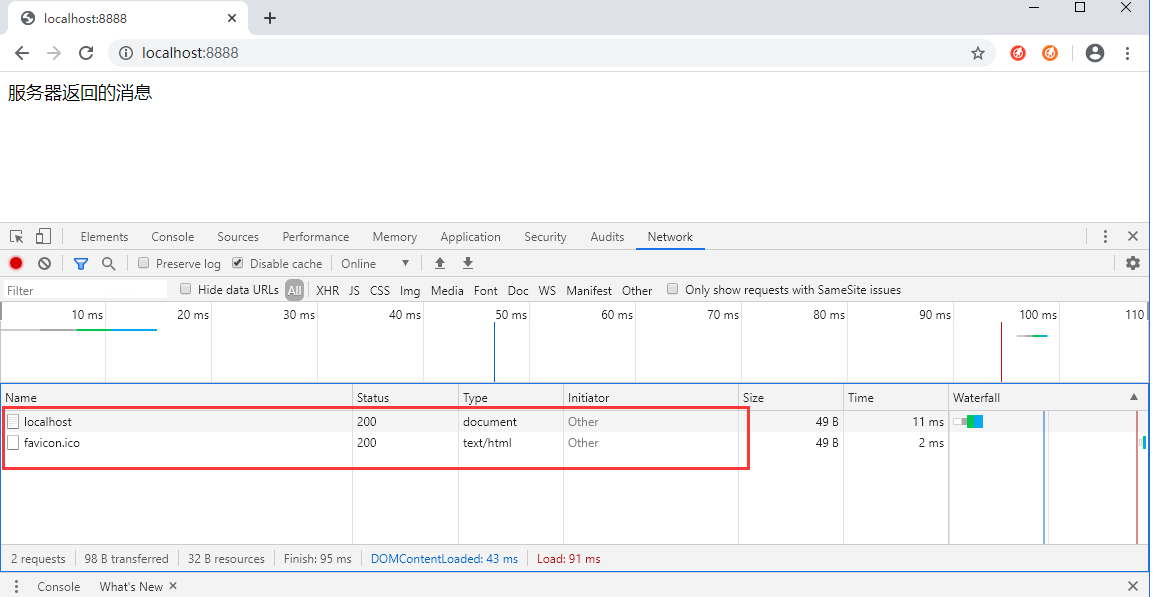在了解tomcat的基本原理之前,首先要了解tomcatt最基本的运行原理。
1.如何启动?
main方法是程序的入口,tomcat也不例外,查看tomcat源码,发现main是在Bootstrap 类中的;
2.如何建立连接?
要通讯,必须要建议socket连接,我们需要使用哪种socket,是根据它使用的哪种协议进行判断的。tcp协议or udp协议?http协议本身属于tcp协议,因此我们选择的socket是基本tcp协议的socket。在tomcat中,StandardServer 中 await() 方法具体实现了 socket连接;
3.使用哪种io模式?
- BIO方式适用于连接数目比较小且固定的架构,这种方式对服务器资源要求比较高;
- NIO方式适用于连接数目多且连接比较短(轻操作)的架构,比如聊天服务器;
- AIO方式使用于连接数目多且连接比较长(重操作)的架构,比如相册服务器
- tomcat 使用了aio,bio、nio三种io模式,它们不同的应用各自发挥其优点。这里通过bio简单实现一个tomcat服务。
代码示例:
package com.io; import java.io.IOException; import java.net.InetSocketAddress; import java.net.ServerSocket; import java.nio.ByteBuffer; import java.nio.channels.ServerSocketChannel; import java.nio.channels.SocketChannel; public class ChannelSocketTest { public void start() throws IOException { // 1.新建NIO通道 ServerSocketChannel ssc = ServerSocketChannel.open(); ssc.configureBlocking(false); // 设置为非阻塞状态 ServerSocket socket = ssc.socket(); System.out.println("启动web服务"); socket.bind(new InetSocketAddress(8888)); while (true) { SocketChannel channel = ssc.accept();
if (channel!=null) Thread thread = new Thread(new HttpServerThread(channel)); thread.start(); } } } // 内部类 private class HttpServerThread implements Runnable { SocketChannel channel; HttpServerThread(SocketChannel channel) { this.channel = channel; } @Override public void run() { if (channel != null) { try { ByteBuffer byteBuffer = ByteBuffer.allocate(1024); InetSocketAddress remoteAddress = (InetSocketAddress) channel.getRemoteAddress(); // System.out.println(remoteAddress.getAddress()); // System.out.println(remoteAddress.getPort()); channel.read(byteBuffer); byteBuffer.flip(); while (byteBuffer.hasRemaining()) { char c = (char) byteBuffer.get(); System.out.print(c); } // 此处打印执行的线程名称,永远为 main 线程 System.out.println(Thread.currentThread().getName() + "开始向web返回消息。。。"); ByteBuffer byteBuffer2 = ByteBuffer.allocate(1024); // 给客户端一个响应,即向输出流写入信息 String reply = "HTTP/1.1 "; // 必须添加的响应头 reply += "Content-type:text/html "; // 必须添加的响应头 reply += "服务器返回的消息"; byteBuffer2.put(new String(reply).getBytes()); byteBuffer2.flip(); channel.write(byteBuffer2); channel.close(); } catch (IOException e) { // TODO Auto-generated catch block e.printStackTrace(); } } } } public static void main(String[] args) throws IOException { new ChannelSocketTest().start(); } }
在浏览器上输入:http://localhost:8888/
控制台输出:
第0行信息:Host: localhost:8888 第1行信息:Connection: keep-alive 第2行信息:Cache-Control: max-age=0 第3行信息:User-Agent: Mozilla/5.0 (Windows NT 10.0; WOW64) AppleWebKit/537.36 (KHTML, like Gecko) Chrome/63.0.3239.132 Safari/537.36 第4行信息:Upgrade-Insecure-Requests: 1 第6行信息:Accept-Encoding: gzip, deflate, br 第5行信息:Accept: text/html,application/xhtml+xml,application/xml;q=0.9,image/webp,image/apng,*/*;q=0.8 第8行信息:Cookie: JSESSIONID=F373E4FD1D4E6E57AB618563B796B909; 第7行信息:Accept-Language: zh-CN,zh;q=0.9 第9行信息:
注意:控制台上的输出包含http请求头信息,socket接收的流格式为字符类型,每一行都代表一种类型的信息,因此解析时需要逐行解析。之前使用BufferedReader的readLine( )方法,但是此方法是阻塞线程的,如果读取不到,会一直处理等待状态,因此配合ready( )方法一起使用。
上面代码在浏览器请求时,后台会执行两次,我们可以打开浏览器F12调试模式查看

发现有一个http请求,还有一个favicon.ico 图片(浏览器窗口图标)的请求。